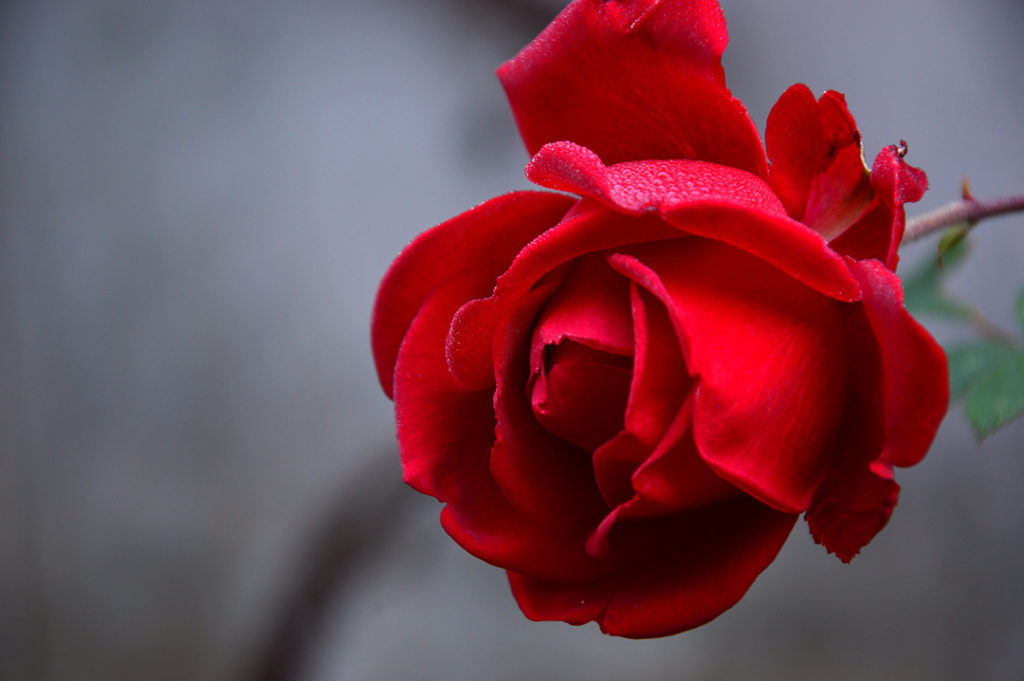
Bangladesh
Rose
Rosa

General Description/Cultural Significance
The rich scent of Rose, Rosa, is very significant for Bangladesh. It is the principal fragrance in Attar, a popular perfume believed to have been introduced to the region by early Muslim traders and conquerors from Persia and Arabia. Attar is used frequently by Muslim populations and associated with Islamic religious celebrations, such as Id-ul Fitr, or the end of Ramadan, and Id-ul Adha, which follows the holy pilgrimage to Mecca. Attar is purchased in small vials.
It takes 113.40 kilograms (250 pounds) of Roses to make 28.35 grams (1 ounce) of Attar. Even a small amount results in a strong fragrance, and is often applied behind the ears or on the backs of palms. In Bangladesh, Roses can also be used to create rosewater, another significant substance for the people who live there.
Climate Change/Conservation Status
The future for Bangladesh is grim. The last four years have been the hottest years on record since record keeping began in the 1800’s. Bangladesh is already being hard-hit by rising oceans as much of the country is only a few feet above sea level. Recently the Bangladeshi island of Kutubdia was swallowed, leaving its inhabitants without their homes or farms. The irony is that the people in this country are among the world’s poorest and most vulnerable. They have done little to bring about the anthropocenic climate change, yet they are the ones being devastated by the effects of it. Rising sea levels, flooding, and increasing numbers of cyclones are just the beginning of the injustice. Tens of millions of children are losing their futures. The number of girls being taken out of school and married off at very young ages is dramatically increasing. The families that have left are living as climate refugees in terrible circumstances.
The majority of Bangladeshis have lived along the coastal areas of the country where the best farm land lies, for centuries. But now, in many places, land crops are dead from salt and homes have washed away— the people have given up on rebuilding and are moving inland.
In 2017, Robert Glennon wrote in Scientific American of the tragic climate change projections for Bangladesh that even a three-foot rise in sea level would submerge almost 20 percent of the entire country and displace more than 30 million people. Some scientists project a 1.52 to 1.83 meter (5 to 6 feet) rise by 2100, which would displace perhaps 50 million people.
The monsoon season of 2017 left widespread destruction in Bangladesh, with some of the worst flooding to ever hit the country. 2018 was also devastating, with torrential rains, flooding, strong winds, and mudslides destroying lives and property.
In Bangladesh, despite the dire climate circumstances, the Rose and its blissful smell are still held in esteem. Millions of Roses are still grown. A 2018 article in the International Journal of Business, Social and Science Research described the extensive floriculture of Bangladesh: “At present 10,000 hectares of land is under flower cultivation where approximately 5,000 resilient farmers are actively growing flowers and foliage in the country with 150,000 people directly or indirectly involved in it as their sole livelihood.” Many villages outside Dhaka dedicate their acres to Roses, but there are other locations, too. The farmers say that working with the Roses makes them happy.
Alternate Names
Bangladesh rose
Sources
The Editors of Encyclopaedia Britannica, 2019. Attar of roses. Encyclopædia Britannica. [website]
First Secretary of the Permanent Mission of the People’s Republic of Bangladesh to the United Nations. This statement can be found on the World Sensorium original website.
Glennon, R., 2017. The unfolding tragedy of climate change in Bangladesh. Scientific American. [website]
The Independent, 2019. Cut flower export on the rise. The Independent. [website]
Khan, A., et. al., 2011. Drinking Water Salinity and Maternal Health in Coastal Bangladesh: Implications of Climate Change. Environmental Health Perspectives, 119 (9), pp. 1328-1332. DOI: 10.1289/ehp.1002804
Rakibuzzaman, M., et. al., 2018. Flower Industry in Bangladesh: Exploring floriculture potential. Int. J. Bus. Soc. Sci. Res. 7(1): pp. 50-56. [online] ISSN: 2309-7892
McDonnell, T., 2019. Climate change creates a new migration crisis for Bangladesh. National Geographic. [website]

